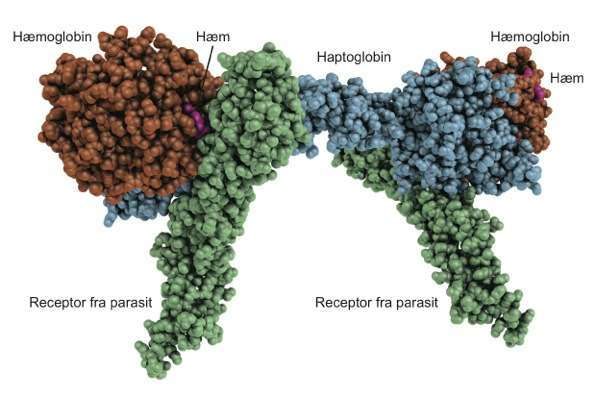Important element in the fight against sleeping sickness found
Researchers from Aarhus have now uncovered how parasites that cause the deadly sleeping sickness in Africa absorb an important nutrient from the human blood stream. The result may help the development of more effective drugs to fight the disease.

Researchers from Aarhus University have taken an important step in the fight against sleeping sickness, a disease that is a major problem in parts of Africa. According to the World Health Organization (WHO), the disease threatens approximately 60 million people and the treatment options are poor.
The deadly disease is caused by a parasite that is transferred to people via the bite of the African tsetse fly. The parasite lives in the bloodstream where it absorbs haemoglobin from human red blood cells. However, if left untreated it can infect the central nervous system and cause a coma-like state. Haemoglobin is important for the parasite as it contains what are known as ‘haem groups’, which it cannot produce itself. The researchers have now discovered precisely how the parasite finds this crucial haemoglobin in humans. With the new knowledge it will be possible to develop targeted treatments and fight the disease much more effectively.
The results have recently been published in the scientific journal Nature Communications.
Desperate need for better treatment
The new knowledge makes it possible to improve the treatment of sleeping sickness.
"The drugs currently being used are not very effective and have many side-effects. The treatment is particularly difficult once the parasite has infected the central nervous system. At this point, as many as five per cent of the patients die from the side effects. Our discovery certainly provides new perspectives for a more effective treatment with fewer side effects, something that is very much needed," says Associate Professor Christian Brix Folsted Andersen from Aarhus University, who is one of researchers behind the study.
Sleeping sickness parasite recognises haemoglobin
The researchers have mapped how the parasite recognises the haemoglobin it requires in order to survive.
"The parasite has developed a mechanism so that it can directly recognise haemoglobin. It does this via a receptor on the cell, that’s to say a molecule, which binds very strongly to the haemoglobin. We have now uncovered precisely how the receptor binds to the haemoglobin," explains postdoc Kristian Stødkilde-Jørgensen from Aarhus University, who has also participated in the study.
This knowledge can be utilised in the development of new medicines.
"Now that we know how the receptor interacts with the haemoglobin we have the possibility to develop targeted medicines. For example, an artificial haemoglobin coupled to a toxin that will kill the parasite. Or a compound that blocks the interaction between receptor and haemoglobin so that the parasite cannot absorb haemoglobin" says Christian Brix Folsted Andersen.
Facts about sleeping sickness
- Sleeping sickness is a serious infection in the blood which ends up attacking the central nervous system.
- The disease is caused by a parasite that can be transferred via the bite of the tsetse fly.
- The symptoms are confusion, a disturbed circadian rhythm, dementia, seizures and increasing drowsiness and finally coma.
- There is no vaccine or medicinal prevention against the disease which is fatal if not treated.
- The WHO estimates that between 30,000 and 50,000 people are affected by the disease and that a further 60 million people are threatened by it.
- The fly and the parasite can be found in a wide belt around the African equator.
Read more
Read the scientific article Structural basis for tryponosomal haeme acquisition and susceptibility to the host innate immune system in Nature Communications.
Further information
Associate Professor Christian Brix Folsted Andersen
Aarhus University, Department of Biomedicine
Tel.: +45 8715 4356
Mobile: +45 3026 4855
cbfa@biomed.au.dk